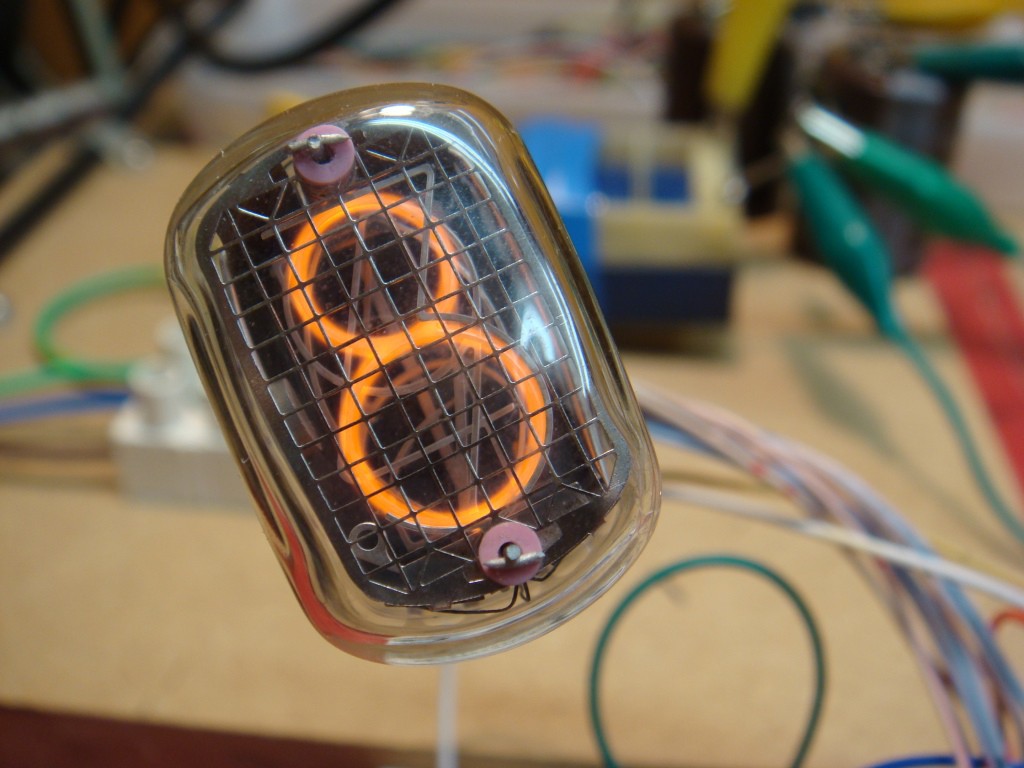With parts sorted the next step was to develop a testbed, just a simple High Voltage supply I told myself. Like that ever works, once I started I had to keep going and before I knew it it was 1AM.
Now before we move forward I must remind the reader that High Voltage is dangerous and deserves your upmost respect and undivided attention. High Voltage power supplies for nixie operations often contain DC voltages in excess of 150V and AC voltages at mains potential. The reader must be confidant in working with these potentials before undertaking a project like this. It should be noted that some countries, such as New Zealand, consider this to be prescribed electrical work and thus it must be done by an appropriately licenced person.
Right, with the appropriate safety notices posted I started work on my HV supply. Given the IN-12B nixie tubes require an upkeep voltage of 200V, and the New Zealand mains supply is 230V 50Hz AC I had an ideal supply at my fingertips, all the I need to do was rectify it, right? While technically correct the last thing I wanted to do was have my HV supply at mains potential, even if it was just for testing purposes. My solution was to back to back two identical power transformers, providing full isolation between my supply and mains. These transformers were originally salvaged from standalone emergency lighting units whose batteries’ had outlived their usefulness. A Greinacher voltage doubler on the output of the second transformer proves rectification and the final, stable output voltage.
With a stable HV supply I was able to light up my nixies for the first time. In a word: Gorgeous. As those readers that have worked (played?) with nixie tubes in the past will know, there is something mesmerizing in that orange glow. But static numbers wasn’t enough, and having come this far I had to continue, I had to make the numbers change.
 The Reverend
The Reverend

Discussions
Become a Hackaday.io Member
Create an account to leave a comment. Already have an account? Log In.